Storyline
American Beauty is a 1999 American drama film directed by Sam Mendes and written by Alan Ball. Kevin Spacey stars as Lester Burnham, a 42-year-old advertising executive who has a midlife crisis when he becomes infatuated with his teenage daughter's best friend, Angela (Mena Suvari). Annette Bening co-stars as Lester's materialistic wife, Carolyn, and Thora Birch plays their insecure daughter, Jane. Wes Bentley, Chris Cooper and Allison Janney also feature. The film is described by academics as a satire of American middle class notions of beauty and personal satisfaction; analysis has focused on the film's explorations of romantic and paternal love, sexuality, beauty, materialism, self-liberation, and redemption.
Marimba - Musical Instrument used in American Beauty. (Score)
American Beauty Trailer
American Beauty – Themes & Elements
THEMES
• American dream
• Family
• Beauty
• Marriage
• Infidelity
• Happiness
ELEMENTS
• Setting
• Characters
• Acting
• Colour
• Motifs
• Mise-En-Scene
• Camera Technique
• Sound
• Lighting
• Point of view
Questions to prompt thinking about the film text, ‘American Beauty’
1. What significance did the Opening scene have to the rest of the narrative?
2. Why were the Actors & Actresses cast for each of the characters?
3. What was the relevance of using the colours Red, White & Blue? Why were these a common Motif employed by the director?
4. The title of the film has significance – what is it?
5. Which production & story elements stood out to you in this text?
6. Who do you think killed Lester and why?
7. Discuss a scene where Mise-En-Scene was employed as an effective tool by the Director to provide meaning to the audience.
8. Was there a Leitmotif (when a character is linked with a piece or genre of music) employed by the Director?
9. Select a character from this film text and discuss the elements employed by Sam Mendes to inform and engage audience reception.
Opening Scene Analysis
Opening Scene Analysis
Watch the clip beside and discover in cinematic terms what is happening in the opening scene of American Beauty. This is extremely helpful to get the media language for this text.
American Beauty Discussed
Mise-En-Scene Analysis
Opening Scene Analysis
Sound to represent the shift in characters
Lester - American Women by: The Guess Who
Carolyn - Don't rain on my parade by: Bobby Darin
Mise-En-Scene in American Beauty
Using the images below have a closer look at how the Director has employed mise-en-scene to convey messages to the audience.
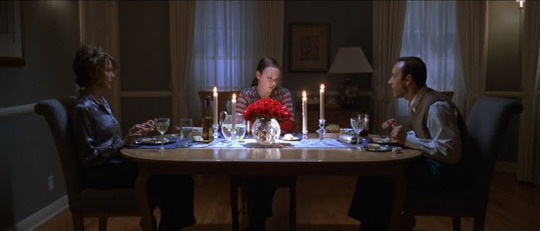
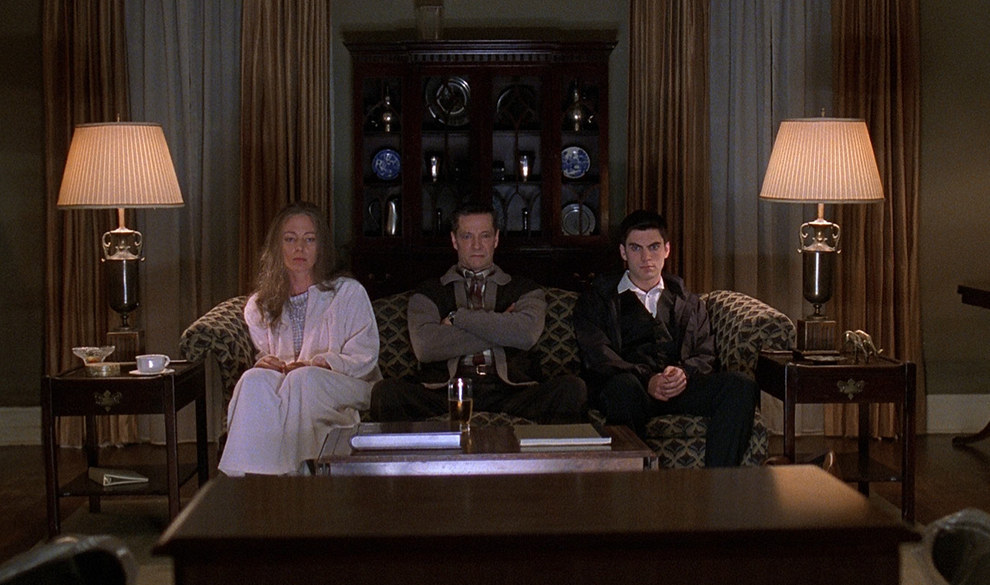
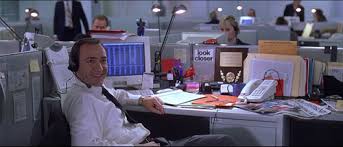
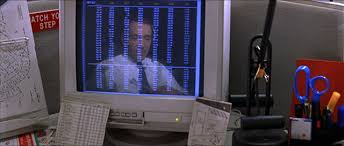
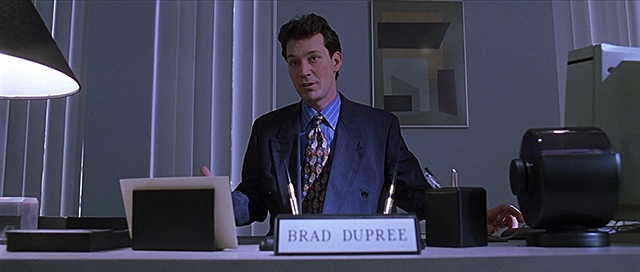
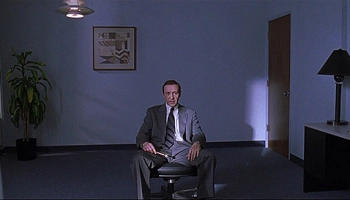
How make-up was used to represent the characters - Angela & Jane
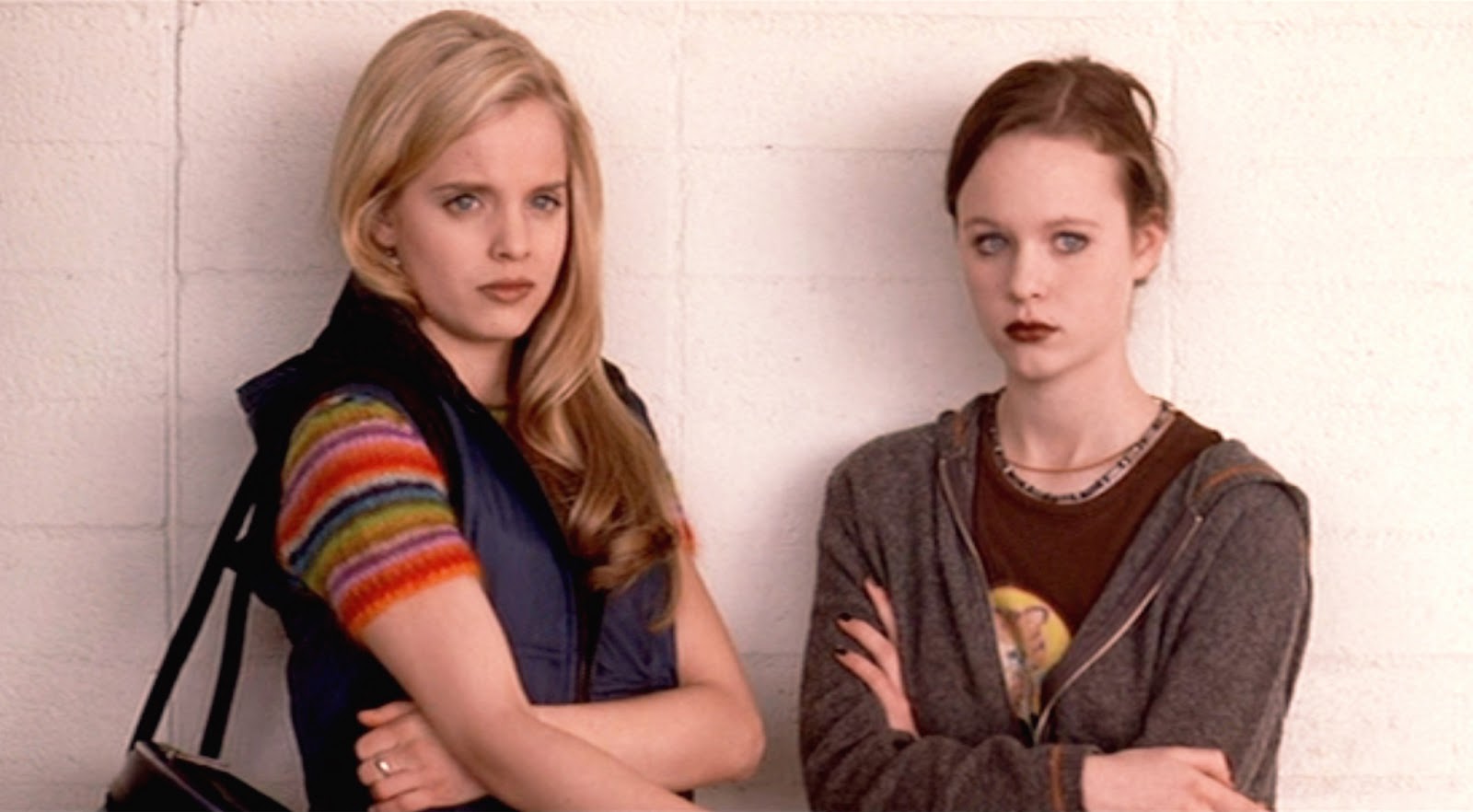
Angela & Jane in the opening
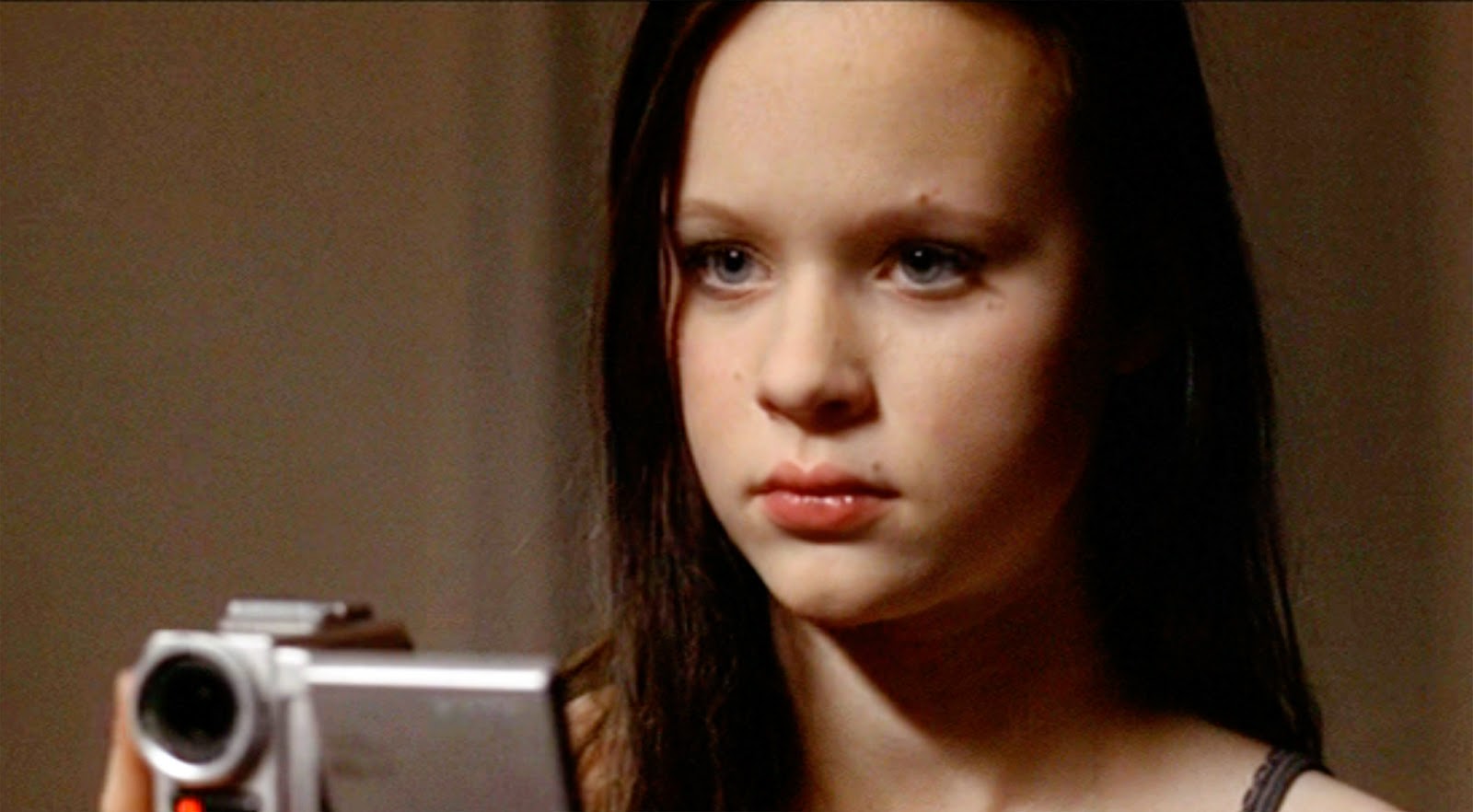
Jane at the resolution

Angela at the resolution
How make-up is used as a tool to reveal character motivation in the narrative
The Director has applied and removed make-up on both characters, Angela and Jane as the narrative progresses. Jane is introduced to the audience wearing lots of make-up and Angela wearing very limited. However, as the narrative progresses the make-up is removed from Jane and applied to Angela. This promotes the tag line, 'Look Closer' to the audience, which is used as a common motif through out the narrative. It allows the audience to engage with the characters and give creditability to their insecurities and confidence of both characters.
SAC & EXAM questions answered
Well written example – By Student
The dinner table scene - Mise-en-scene
In American Beauty Mise En Scene is used to assist the audience in understanding the tension and family drama between the characters along with individual character traits. This can be seen in the first dinner sequence shot. The dinner setting is lit very coldly, with blue lighting and greyish filters. The frame highlights the symmetrical neat nature of the setting, conveying and reflecting Carolyn’s controlling and obsessive nature. Lester is slumped low on his seat opposite Carolyn, with Jane awkwardly between them. This distance between the parents conveys the dysfunctional nature of the family, highlighting the dramatic style. The audience can quickly appreciate what Director, Mendes was trying to accomplish with this scene. They feel like they understand the conflict between these characters, the lack of love, lack of power and lack of confidence that each one seems to have lost. Each one of these personality traits reinforces the themes through out the narrative.
Well written example – By Student
Camera Technique in the opening scene explained
In the film text, American Beauty, camera techniques were employed to contribute to the narratives meaning that Lester is re-telling his story from Heaven. This is shown in the opening scene as Lester begins speaking through voice over narration. The camera then pans from the sky tracking down Lester’s neighbourhood suggesting to the audience that Lester is dead.
Well written response: By student
Characters are an important part of narratives. In the other text you studied, explain how one character was established and developed throughout the narrative your response should make reference to some of the following: sound, camera techniques, acting, Mise-en-scene, editing, lighting. - 6 marks -
American Beauty’s protagonist, Lester Burnham develops dramatically throughout the film and this is established through camera techniques, acting and Mise-en-scene. Lester is introduced as a deeply unhappy man who has fallen into a dull and depressing routine of life, and this is reflected through high camera angles which make Lester appear small, powerless and weak. Kevin Spacey’s acting also reflects these characteristics, through body language; slumped shoulders, and a sarcastic and dull tone of voice (which expresses boredom and hidden annoyance), by doing so, Spacey is able to highlight his characters dissatisfaction with his life. As the film progresses, Lester makes changes to his life and he becomes confident and happier, this can be seen by his body language which becomes more confident and powerful (sitting up straight, making direct eye contact). An example of this change can be seen through Mise-en-scene. At the beginning of the film, Lester has a meeting with his boss, Brad in which the dull, ugly décor behind Lester represents his dissatisfaction and boredom with his life whilst the excessive empty space around him emphasizes the emptiness of his life and makes him appear small and powerless. In Brads frame the low angle of the camera emphasizes his name plate and gold stationary, this makes him appear superior, important and threatening. The venetian blinds behind Brad appear like prison bars, implying that Lester sees his job as a prison. This scene contrasts to when the two meet again later on and Lester’s character has developed. Lester’s new found confidence is shown through the positioning of Brads desks and its décor in the frame, which is now small and insignificant, suggesting that there has been a change in power, as Lester is now the one in control.
Well written response: By Student
Compare how editing techniques contribute to how audiences may read and understand the narratives in both of the texts you studies this year. – 7 marks -
In American Beauty editing techniques employed in the opening development and resolution contribute to audiences understanding of the genre of mystery drama, whereas in The Gift editing is used to establish the genre of psychological thriller and reveal relationships between characters.
The opening scene of American Beauty ends with a cut to black conveying a sense of disruption to Burch’s dialogue and the audience is positioned to feel as though there was more to the conversation then what you saw, introducing the element of mystery. A fade is also indicated to symbolise a lapse in time. Dramatic tension is created throughout the flm through slow edits allowing more action to be captured and tension to be built.
In The Gift however, slow edits are incorporated to position the audience to feel uneasy as they want the scene to move faster. Long black fades are also incorporated between intense scenes which causes the audience to be unsure of the characters next decision, supporting the psychological thriller genre.
In the resolution of American Beauty a dissolve follows Lester being shot in the head as flash backs occur of Lester’s life, when times were happier, suggesting that he was once living the American dream. In the final scenes of The Gift parallel editing is employed to build suspense and highlight the tension between the characters. Through parallel edits the audience is able to view the events taking place of Gordo visiting the hospital and Simon viewing the video, simultaneously. This raises the tension as it causes the audience to become suspicious of Edgerton’s visiting Hall due to the ambiguous content on the video that Bateman is watching.
Editing techniques such as cuts, slow edits, dissolves and flash backs are employed through out American Beauty to contribute to the audiences understanding of the genre of mystery/drama and the understanding of time, comparatively in The Gift techniques such as fades, parallel editing and fast cuts reinforce the genre of psychological thriller.
Well written response: By Student
Camera Technique & Lighting working together in the cheerleading scene:
Camera techniques and lighting work closely together to draw the audience’s attention to notions of romance in American Beauty. When Lester fantasises about Angela, the camera is at a high angle, looking downwards on Angela from a birds-eye view, creating a sense of dream-like surrealism. The wide shot is centred on Angela and displays her entire body, positioning the audience to understand Angela’s suggestive promiscuity. Alongside camera techniques, the diffused high intensity lighting focuses on Angela, illuminating her body in an idyllic lustre that captivates the audience and situates them to identify with the romantic quality of this scene. However, the spot-light technique adopts a surreal brightness and romantic lustre, indicating to the audience that this scene is merely of Lester’s imagination.
Well written example: By Student
Acting & Camera Techniques in Opening Scene:
During the opening sequence of Sam Mendes film text, American Beauty, Acting and Camera Techniques are employed to engage the audience. A hand held camera is used which provides the audience a feeling of intimacy. The audience is positioned to feel like they are watching the characters being themselves, rather than acting. This further helps them relate to the characters on screen. Thora Birch’s character, Jane produces intimidating and menacing body language as she sits up and the camera zooms in to her. Her evil like staring eyes pierce the camera lens and make the audience feel like she is directly talking to them. The camera zooms in, closer to her face, revealing Birch’s contorted and aggravated facial expressions. Her very serious and threatening tone makes the audience cautious of her character as she speaks directly into the lens of the camera. The audience gathers from this scene that Thora Birch’s character, Jane is a possible suspect for the future murder of Lester.
Well written example – By Student
Production and story elements communicate to the audience what genre a Narrative may be. Discuss how genre has been established for the audience through the use of production and story elements in one of the narratives you have studied this year.
The genre of the film ‘American Beauty’ at it’s core, is a drama, with elements of dark and black humor. This notion is supported through Thomas Newman’s musical score. His composition creates a gamut of emotion, and evokes all types of responses that are indicative of dramatic films. This was highly prevalent within the scene where Angela sexually arouses Lester. When Angela is dancing, there is a slow symbol percussion sound that mirrors her movements, however, as she opens her jacket, the beat and rhythm escalate and the music becomes wild as the red roses emerge from her chest, accentuating to the audience the presence of Lester’s unrealistic and sultry sexual fantasy. Quickly, Lester’s fantasy is juxtaposed with the sedate and rhythmic school band song and applause from the crowd that immediately contrasts from his dream. Newman’s discordant percussive motif is consistently played throughout his fantasies, which invokes a high level of sexual arouse that is highly dramatic, as it sparks a sense of youthfulness within the audience, and Lester’s yearning to regain his lost manhood. Moreover, the dramatic nature of this narrative is enhanced through the use of setting. Set in the ideal American suburbia, American Beauty opens with aerial shots of the neat, linear streets within Lester’s neighborhood. This particular context is significant to the plot as it illustrates to the audience how the Burnham’s are living the ‘American dream,’ as they live in the perfect white exterior house with the picket fence in the suburbs, two cars and two well-paying jobs. The perfect white paneling coupled with blue shutters and the red door also eludes to the prestigious American flag, accentuating to the audience the presence of the American dream. As the movie is set in the 90’s, the Burnham’s neighbours, the Fitts’, exhibit all the qualities of the traditional conservative family. The father, Frank Fitts, is trying to avoid any form of losing control of his rebellious teenager, and is surrounded by an increasingly progressive culture that is steering away from the societal norms of the 90’s. These notions of the American dream and 90’s conservatism heighten the audience’s awareness of the film’s genre, as they are tension-filled and highly dramatic.
Well written response – By Student
With reference to the two texts your studies this year identify how acting was employed to help the audiences understanding of the narrative. You may like to make refer to the following dot points in your answer:
• Reason for casting
• Development of character
• The relationships between characters
• The role of the character in the narrative
In Sam Mendes’ text ‘American Beauty’ the use of Kevin Spacey’s compelling portrayal of Lester Burnhan aided in the audience’s understanding of the narrative. As the character of Lester develops throughout the entirety of the film, Kevin Spacey’s use of contrasting his concaved back and scooped posture in the beginning of the film, with his upright body and shift in physicality through ‘working out’ heightens the audience’s awareness of his assertion of individuality and uncivilised impulse, and his sexual fervor for Angela. Moreover, as Kevin Spacey plays a fundamental role in the development of the plot in American Beauty, Spacey keeps the audience engaged and captivated through the use of his narration. Imbuing the character of Lester with a particular charisma and likeability, his satirical speech, and narration as a dead character alludes to theme of loneliness, and Spacey’s distinctive wry tone, heightens the audience’s awareness of how he is isolated from his family, the people around him and the world. In Joel Edgerton’s psychological thriller ‘The Gift,’ Jason Bateman’s convincing performance as Simon also enhances the audience’s understanding of the narrative. Despite the audiences having a familiarity with Jason Bateman and his acclaimed comedic work, his casting in this intense and dramatic psychological thriller, his compelling portrayal in this film is contrasted with previous work, establishing him as the ‘nice guy’ protagonist who the audience should follow. Through his soft-spoken and controlled presence in the opening of the film, there is then a flip between the protagonist and the antagonist as Simon becomes more hasty with Robyn, through increasing the volume of his voice and becoming violently aggressive with Gordo, establishing him as the real bully.